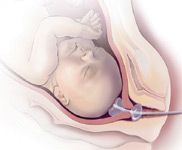New Products
The latest in medical products for obstetrics and gynecology
Cervical ripening balloon catheter debuts

The first of the two balloons is inflated on the uterine side of the cervix before the second balloon is inflated on the vaginal side. As the balloons adapt to the cervical canal's contour, they're said to minimize a patient's discomfort. When the catheter is removed, cervical conditions should have improved enough to allow for induction of labor and active labor management. Supplied sterile in peel-open packages, the product is intended for one-time use. For more information, visit http://www.cookmedical.com/.
The Food and Drug Administration recently approved EvaMist, a metered-dose transdermal estradiol spray to treat moderate-to-severe vasomotor symptoms due to menopause. Vivus, the Mountain View, Calif.-based manufacturer of the product, advises that the most common side effects reported in studies were headache, breast tenderness and nipple pain, nausea, back pain, arthralgia, and inflammation of the nasal passage and pharynx. KV Pharmaceutical of St. Louis, which previously licensed US marketing rights to the drug from Vivus, expects to launch EvaMist in 2008. For more information, visit http://www.vivus.com/.
Vaginal insert that encourages embryo implantation is approved
The FDA has approved Endometrin (progesterone) Vaginal Insert, 100 mg, which is indicated to support embryo implantation and early pregnancy by supplementation of corpus luteal function as part of an ART treatment for infertile women. The approval to market the product was based on findings from the largest in vitro fertilization (IVF) trial in the world, conducted at 25 US centers, according to Ferring Pharmaceuticals (Parsippany, NJ). The insert is administered using a disposable applicator two or three times daily, starting at oocyte retrieval and continuing for up to 10 weeks. Vaginal absorption of the micronized progesterone results in high tissue levels at the endometrium as well as measurable serum levels. For more information, visit http://www.ferringusa.com/.
Contraceptive sponge bounces back

The sponge works by preventing sperm from passing into the cervix and by "soaking up" semen as it continually releases nonoxynol-9 spermicide. Studies show the product to be 89% to 91% effective in preventing pregnancy. For more information, go to http://www.todaysponge.com/.
